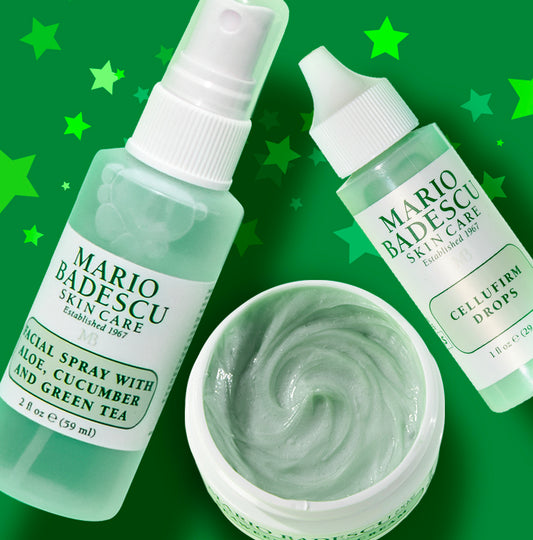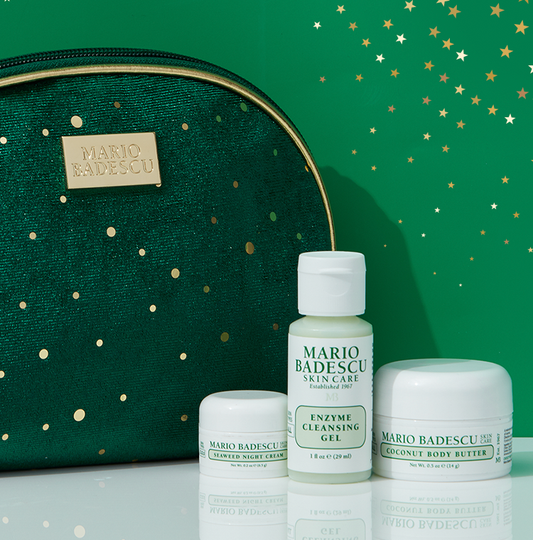When it comes to protecting our skin from the damaging effects of the sun, sunscreen is an indispensable tool in our skincare arsenal. However, with the wide variety of sunscreens available, it can be overwhelming to choose the right one. (Learn the importance of sunscreen with our sunscreen guide)
Both chemical and physical sunscreens can provide broad-spectrum protection with varying levels of SPF – both high and low.
What are Chemical Sunscreens?
Chemical sunscreens work by absorbing UV rays. These sunscreens contain organic compounds such as avobenzone, octinoxate, and oxybenzone. One of Mario Badescu's chemical sunscreen options is the Mario Badescu Oil Free Moisturizer SPF 30.
Chemical Sunscreen
Mario Badescu Oil Free Moisturizer SPF 30
Our oil free moisturizer is perfect for daily use – a lightweight, non-greasy daily moisturizer this chemical based sunscreen offers SPF 30 protection and works well under makeup or on its own.
What are Mineral Sunscreens?
Mineral sunscreens, also known as "physical filters" work by creating a barrier on the skin’s surface and reflecting and scattering UV rays. These sunscreens typically contain active ingredients such as zinc oxide or titanium dioxide.
Mineral sunscreens are generally well-tolerated by all skin types. Whether you have dry, sensitive, oily, or combination skin, these sunscreens can be incorporated seamlessly into your daily skincare routine. They are a great alternative to chemical based sunscreens – particularly for people with sensitive skin, or allergies as mineral sunscreen ingredients often have calming properties.
Physical/Mineral Sunscreen
Mario Badescu Mineral Sunscreen SPF 30
Our mineral based sunscreen provides broad-spectrum protection without leaving a heavy or greasy residue. It contains micronized zinc oxide, which effectively shields the skin from UVA and UVB rays. The formula is non-drying and fragrance-free, safe for sensitive and blemish-prone skin and reef safe.
When should I use a chemical sunscreen on a physical sunscreen?
You can use either sunscreen formula whenever you please – but there are some times when a chemical sunscreen or a physical sunscreen might be a better pick.
When to Use a Chemical Sunscreen
- When taking photos: Physical sunscreens which use ingredients like zinc oxide and titanium dioxide can cause a white cast and “flashback” when flash photography is used.
- When wearing makeup: Some physical based sunscreens have a thicker and heavier texture which can sometimes be frustrating to use underneath facial makeup products.
- When wanting a light texture: If you are wearing a nice outfit and looking to wear sunscreen (as you should) a chemical based sunscreen might be a better option as their lighter texture absorbs more seamlessly.
- When being active or sweating: Chemical blockers used in sunscreen often have better water and sweat resistance.
When to Use a Physical or Mineral Sunscreen
- When swimming in the ocean: Certain chemical sunscreen blockers (notably Oxybenzone) are not recommended when swimming in the ocean – particularly in areas with strong marine life – certain chemical-based blockers have been shown to bleach coral – as a result places the Caribbean, Australia, and Hawaii typically recommend physical sunscreens as an alternative.
- When having a sensitive skin flare up: If you are having issues with sensitive skin, redness, or other skin conditions – a mineral sunscreen can be the answer to sun protection (zinc oxide is commonly used in rash creams and soothing and protective barrier creams).



